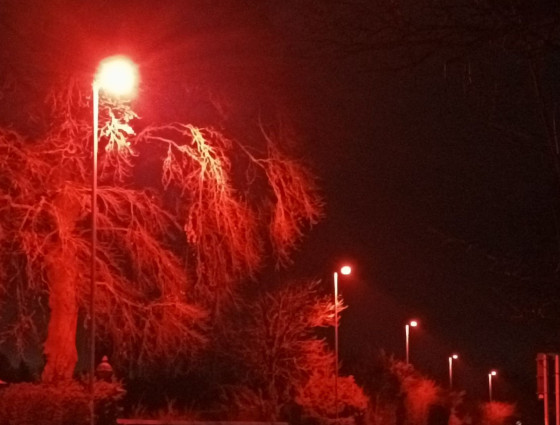Worcestershire County Council is helping to shine a light on the impact on bats from Artificial Lighting at Night, with a contribution in updated national guidance.
The Institution of Lighting Professionals (ILP) has launched their latest practical guidance on considering the impact upon bats when designing lighting schemes.
The guidance is intended for use by lighting professionals, lighting designers, planning officers and developers to help reduce or avoid lighting impacting on bats or other wildlife.
Experts from various sectors, including highways, lighting designers, manufacturers, local planning authorities and Cody Levine, Ecology Team Leader at Worcestershire County Council came together to develop the guidance.
Councillor Richard Morris, Worcestershire County Council's Cabinet Member for Environment, said: “I’m really pleased, that in Worcestershire, we’re taking the impact that lighting at night has on various species of wildlife, but in particular bats, very seriously.
“Cody has been heavily involved in all this work and it’s great to see him contributing to this guidance, showing just how involved we are, as a county, to helping provide a better environment for bats, other wildlife and people.
Cody Levine, Ecology Team Leader for Worcestershire County Council, said: “This new guidance helps showcase, nationally, how Worcestershire County Council is setting best practice; maintaining highway safety, reducing energy demands and protecting our natural environment.
“Around 35% of artificial light is typically wasted; being unshielded or poorly targeted. By using warmer coloured ‘wildlife-friendlier’ lighting, the Council is focusing light where it’s needed, preventing streetlighting from unravelling the tapestries of our landscapes, and helping to protect some of our rarest biodiversity.”
The updated document, which supersedes 2018 guidance, highlights how Artificial Light at Night is estimated to have risen over 49% in the last 30 years. This has negative impacts on bats, other wildlife and people as well as wasting precious energy.
The County Council has led the way in recent years, with the installation of many wildlife-sensitive streetlights across the county. The first was in Warndon in Worcester and this has since been followed by further lighting in Worcester, Pershore, Upton, Redditch and Evesham.
Wildlife-sensitive streetlights allow bats to move freely between habitats, reducing the impact on general biodiversity. As part of the County Council’s Rapid LED Roll-out scheme, over 2500 streetlights with warmer coloured lighting are being installed to help address effects on wildlife corridors.
Since 2018, there has been an increase in the knowledge on how many of the UK’s 18 bat species are impacted by lighting, through updated research work, but also an increase in knowledge on how this impact can be reduced.
New development projects can further reduce negative impacts of lighting on bats by utilising the guidance along with advice from suitably experienced ecological consultants and lighting experts from the start of a project.
The 2023 edition has a strong focus on avoidance as a key tool to mitigate impacts from lighting on bats, as well has having a range of case studies to demonstrate principles outlined in the document.
The benefits this approach brings are ultimately for bats and other wildlife as well as people and the overall quality of our environment.
This free guidance is available on the ILP website as a Guidance Note GN08/23 and can be downloaded on the Institution of Lighting Professionals website.

 Facebook
Facebook X
X Email
Email WhatsApp
WhatsApp Messenger
Messenger